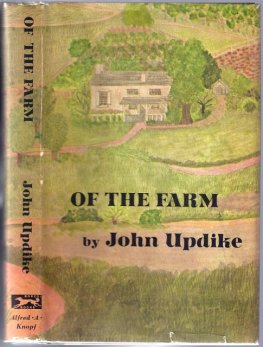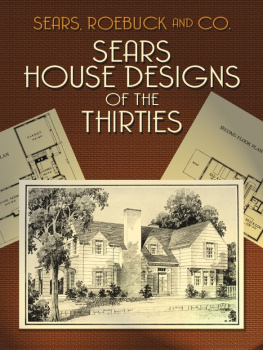CHAPTER I.
THE OLD COLONIE
In May, 1624, the Dutch packet New Netherlands sailed up the Hudson River to the head of navigation, bringing a company of eighteen families under the leadership of Adrian Joris. The immigrants landed at a little trading post called Beaverwick kept by one Tice Oesterhout, a pioneer hunter, married to a Mohawk Squaw. In a few days a party of Indians, probably Mohawks, waited on the newcomers and politely made inquiry as to their object in entering upon Indian lands without notice or permission; Tice Oesterhout and his wife acting as interpreters. Joris replied that they came in peace and hoped to abide in peace on friendly terms with the Indians. He was told that he and his people would be welcome if they joined the universal peace union of the Iroquois, and not otherwise. This proposition the settlers agreed to by acclamation. In due course the General Council of the Five Nations accepted the Colony as a member of the Iroquois Federation. Joris was recognized as the Civil Chief of the little community, and, as he was a Walloon, his people became the Walloon Nation of the Great Peace Alliance. The Great Peace was the treaty forming the basis of the Iroquois Federation. The Colonists, instead of making a treaty with the Indians, gave their adhesion to one already made, thereby securing safety and a practical monopoly of the fur trade on the upper Hudson. They sent annual presents to the Iroquois General Council, which were doubtless received as tribute in recognition of sovereignty, but the Walloon Nation did not seem to care very much about the sovereignty business so long as the fur business continued to prosper, as it did for the next half century.
Two score or so of Walloons did not constitute a very formidable nation but the men were reinforced by the women who had an equal voice not only in local affairs but in the General Council of the Federation.
The settlers built their houses on the Indian trail leading Westward to which they gave the name of Beaver streettheir grand boulevard which must have been two or three squares long. Beaver Street was the main highway of the Walloon Nation and was the center of the Old Colonie as the Dutch neighborhood was subsequently called. Under English rule, the Old Colonie or Beaverwick was merged with Fort Orange and Rensselaerwick, these, collectively, being named Albany in honor of the Duke of York, Albany being one of his titles.
The Dutch of the Old Colonie did not take kindly to the supremacy of the English. They obeyed the laws and the constituted authorities but they stubbornly maintained their autonomy as far as practicable, holding aloof from their English neighbors, keeping to their own language, their own manners and customs, and their own habits of life, generation after generation. As the Old Colonie extended its borders and new elements were added to its population, these Dutch characteristics were gradually modified and finally disappeared altogether, but they resisted modern influences many years and as late as the middle of the nineteenth century, evidences of Dutch ancestry were still to be noticed among the people of the Old Colonie.
My fathers house, where I was born, stood on the south side of Beaver street next to that of the Ostranders where the last Walloon Civil Chief was said to have lived. As a child I heard Dutch spoken in the street, in the stores and the market. We spoke Dutch, more or less, at home, and no other language at my grandfathers farm. The Sears family came from Cape Cod, but my mother was a Van Der Zee, and although the first Van Der Zee came from Holland in 1642, the family was as Dutch as ever in 1842, two centuries later. Mother learned English, at school but spoke it very little until after her marriage, and then crooned nursery rhymes in Dutch to her children; Trip a trop a tronches, Wat zegt Mynhur Papa, etc.
My fathers store was on the Pier, which is equivalent to saying he was a flour merchant. The Pier was a sort of bulkhead between the canal basin and the river, and it was occupied by a single row of buildings, all of which were flour stores. The Genesee Valley was a famous wheat growing country in the first half of the nineteenth century, and the grain was ground in Rochester and shipped down the Erie Canal to Albany, the receiving and distributing center for the trade. My father made business trips to New York, and, sometimes, as far east as Boston, in those days a long journey. He usually arranged to go down the river in the Spring, having, beside his own affairs, commissions to fill as delegate to one or more of the May Conventions.
The May Conventions were annual gatherings of religious bodies, philanthropic organizations, reform associations, literary associations, educational associations and all sorts of associations for the improvement of the human race in general and the American people in particular. The Friends yearly Meeting, the Conference of the American Anti-Slavery societies, the Grahamites or Vegetarians, the Temperance advocates and other upholders of beneficent, benevolent, and Utopian ideals assembled on these occasions, and with much eloquence, made it clear to the meanest understanding that the universal adoption of the principles especially professed by each would do away with all evil in the world and bring about a return of the Golden Age.
My mother did not always attend the May Conventions, but whenever she went, she took one of us children with her. My first visit to New York was made as an unqualified member of the Albany delegation to something or other, I forget what. One thing I do not forget, however, and that is hearing Horace Greeley make an address, and afterward being puffed up with pride when the orator chatted familiarly with his small admirer at dinner in our hotel on Barclay Street.
When my mother was absent from home, the family was left in charge of our courtesy Aunt Catholina Van Olinda who kept the house with my elder sister Althea, while I was dispatched for the time to my grandfathers farm. I was very much at home on the farm and spent many happy days there in early childhood, being regarded as a sort of heir apparent by the principal personages there, namely, my grandfather, John Van Der Zee the elder, and Tone and Cleo. The last named, Antony and Cleopatra, to speak properly, were ancient negroes born and brought up on the farm and rarely leaving it in all their long lives. They were slaves, inasmuch as they disdained to be emancipated, and free niggers they looked down on with contempt. They belonged to the Van Der Zee place and the place belonged to them, and not to belong to anybody or to any place was, to their apprehension, very like being a houseless and homeless pauper. As I was John Van Zee the younger, according to their genealogy the natural successor of Baas Hans, they extended to me assurances of their most distinguished consideration. My father, Charles Sears, was not in the line of succession, he being English or in other words a foreigner. They tolerated him, partly because he spoke to them in Dutch, the only language they knew or cared anything about, and partly because he was, after all, a member of the family by marriage. As he always brought a book in hand when visiting the farm, they made sure he was a drukkerthat is, a printer or bookseller or something of that vain and frivolous description. Cleo attained great age, overrunning the century mark. In her later years she came by inheritance to my mother, and so rather curiously, it happened that while my father openly professed anti-slavery sentiments, my mother was a slaveholder, presumably one of the last of that class in the state of New York.









